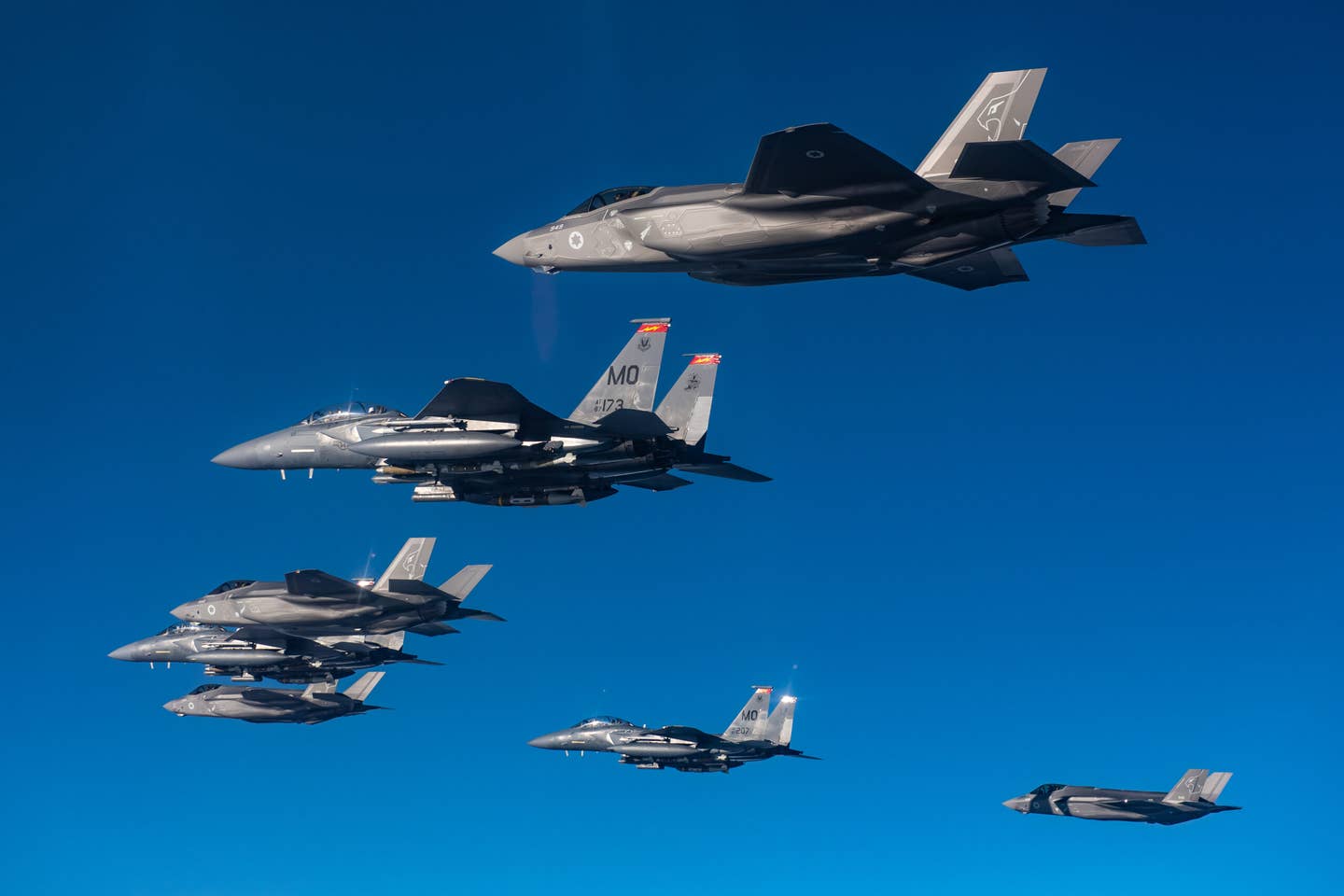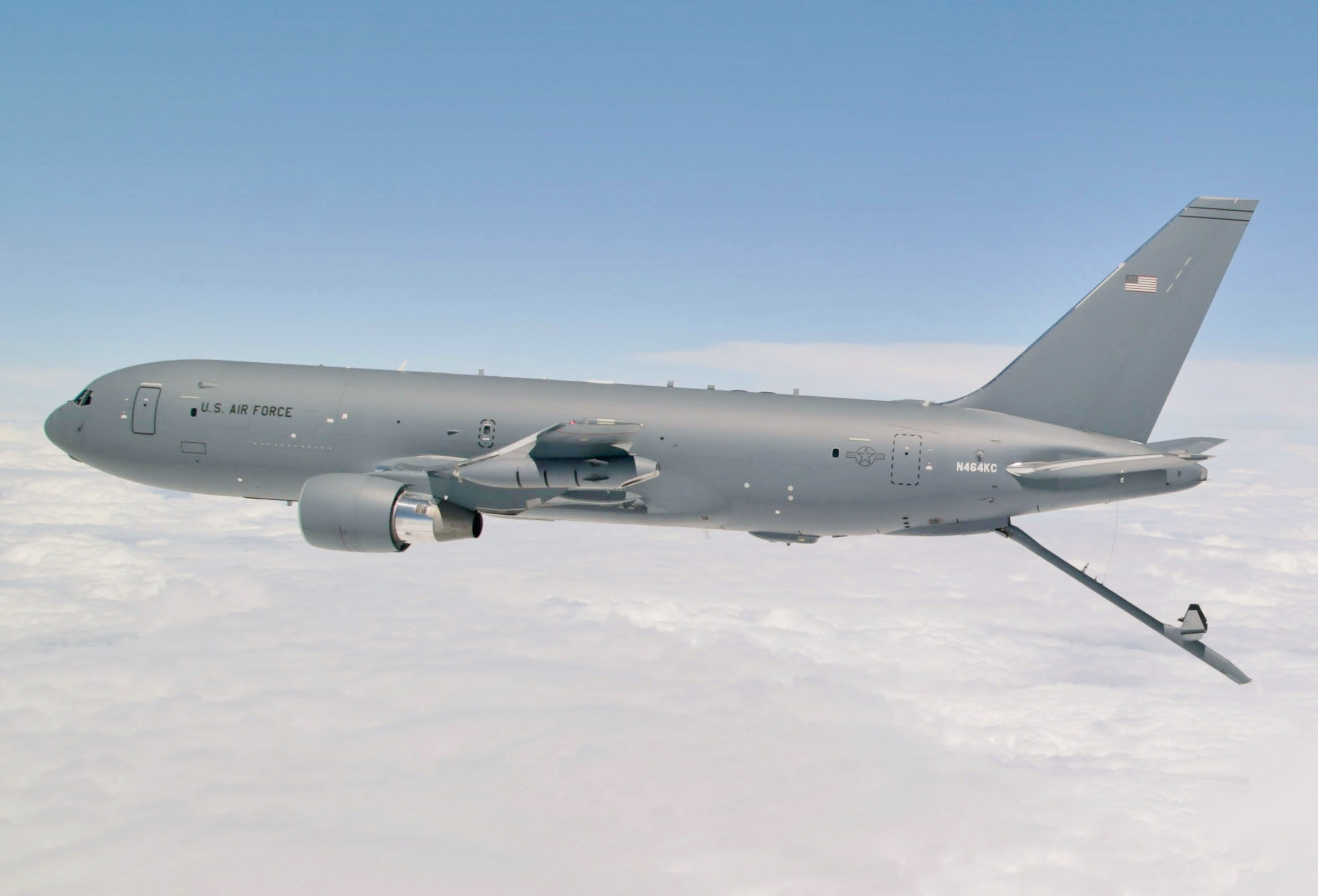Earlier this week, the Israel Defense Force (IDF) published selective footage and details of a series of coordinated aerial drills it staged with the US military. The drills focused on simulating strikes against Iran and its proxies.
The drills were held on November 29 and 30 over Israel and the Mediterranean Sea.
According to a statement from the IDF, the F-35I Adir stealth jets from 116 “Lions of the South” Squadron and F-16C Barak fighters from 101 “First Fighter” Squadron participated in the drills.
On the US side, the drill saw the deployment of F-15E Strike Eagles and F-16 Vipers from the United States Air Force, as well as KC-10 Extender and KC-135 Stratotanker refueling jets.
This proves that the drills saw the participation of one of the world’s most advanced and highly maneuverable fighter jets.
In a departure from the usual practice, the F-15E Strike Eagles of the USAF were seen brandishing live munition, including the GBU-38/B, GBU-31/B versions, and GBU-39/B Small Diameter Bombs on BRU-61/A quadruple racks.
This could be part of an emerging pattern. Just a few days ago, the US fighter jets joined ranks with the South Korean fighters to simulate attacking North Korean targets by dropping laser-guided GBU-12 bombs.
A series of joint exercises simulating various scenarios in the face of regional threats were completed together with the U.S. Armed Forces.
The exercise began as four IAF F-35i “Adir” aircraft accompanied four American F-15 fighter jets through Israel’s skies yesterday. 1/4 pic.twitter.com/eLCdRKzHyE
— Israel Defense Forces (@IDF) November 30, 2022
Even though the joint military drills between Israel and the US are a usual occurrence, the former made no bone that these drills were specially directed towards practicing anti-Iran operations.
The IDF emphasized, “The drills simulated an operational scenario and long-distance flights.”
“These exercises are a key component of the two militaries’ increasing strategic cooperation in response to shared concerns in the Middle East, particularly those posed by Iran,” the IDF added. This becomes most evident with the rare participation of the USAF tanker aircraft at a time when Israel is struggling with its aging and overstretched tanker fleet.
Israel has not been ambiguous about its intention to attack Iranian nuclear facilities and bomb the West Asian country. This was also demonstrated in its ‘Chariot of Fire’ exercise in June this year, which was several times more complex than the recent US-Israel aerial simulations.
The Chariot of Fire drills focused on attacking high-value and fortified targets protected with air defense units of all kinds, long and short range. These drills were also trained at Iran and possibly hinted at a potential attack on its Control and Command as well as high-value military infrastructure.
However, the one thing the recent drills had that the Chariot of Fire did not was: US Tanker aircraft.
The Chariot of Fire drill included Special Forces and cyber components in addition to IAF long-range strike assets supported by its tankers. However, the US Air Force did not offer refueling support for the simulated strike on Iran, as specified by a spokesperson for US Central Command in the aftermath of the drills.
An American KC-135 aerial refuelling aircraft refuelled a number of IAF F-16i "Sufa" fighter jets as the IAF and the U.S. Air Force performed midair refuelling today.
Additionally, the IAF simulated a long-range operational scenario and long-distance flights. 2/4
— Israel Defense Forces (@IDF) November 30, 2022
As part of the recent drills, the IDF tweeted that the US KC-135 aircraft refueled its F-16 Sufa fighter jets. However, the participation of the F-16 Sufa was not confirmed in any other official statement.
The F-16 Sufa of the Israeli Air Force is a modified variant of the F-16D block 50 and 52 fighters and ground attack aircraft.
The IDF has one of the world’s most advanced fighters, the stealth F-35 aircraft. However, despite possessing the best jets capable of becoming invisible to enemy radars, Israel requires something “extra” to neutralize Iran’s nuclear site or high-value targets, and that extra is mid-air refueling aircraft.

Israeli Long-Range Strikes Will Be Bolstered By Mid-Air Refuelers
The US Air Force’s ability and willingness to provide extra aerial refueling becomes extremely significant at a time when Israel is operating with a thin-sized and archaic tanker fleet.
It is also pertinent to note that the KC-46 refuelers that Israel has ordered from the US will take a couple of years to arrive in the country.
As stated earlier, four KC-46As will be delivered to the Israeli Air Force (IAF), whose interest in the aerial tanker has been known for many years. The KC-46 can refuel planes at a rate of 1,200 gallons per minute with the help of its 55-foot fly-by-wire refueling boom.
With the KC-46 tanker, Israel can keep a dozen of its bomber planes in the air for up to 12 hours and a range of over 11,000 kilometers, as previously noted by EurAsian Times.
This might provide the Israeli military with a significant advantage in any operations against Iran, located around 1,000 kilometers from Israel’s borders and considered one of the biggest challenges to the zionist state’s security.

Israel had previously asked the US to expedite the delivery of the refueler, ostensibly in preparation for an attack on Iran, but the Biden administration refused, citing that the first plane would not be delivered until 2024.
Until now, the US has been believed to be delaying tanker deliveries to Israel to prevent Tel Aviv from carrying out a plan to begin airstrikes on Iran, which might spark a major crisis in the Middle East.
However, with the nuclear talks on the brink, there is speculation that the US could consider a military option against Iran, but only after the diplomatic options are exhausted.
That being said, whether the participation of the US tanker aircraft like the KC-145 in drills with Israel translates into direct tanker help for an Israeli attack against Iran still depends on political and diplomatic decision-making.
However, even supplying tankers with a training function could be extremely beneficial for Israel and its preparations for contingency.
The commander of US Air Forces Central (AFCENT) said, “This exercise showcases our commitment to partnering with Israel to counter threats to regional security and stability,” added Lt. Gen. Alexus Grynkewich.
The Israeli Air Force provides tremendous deterrent capability and capacity throughout the Middle East region. We’ll continue to build opportunities to improve our integrated defenses and ability to project combined airpower.”
Given the United States and Israel’s ever-closer military alliance, such drills are only likely to become more common. IDF chief Aviv Kohavi recently told American defense leaders in Washington that the two forces’ attack plans against Iran must be expedited.
He said collaborative military operations with the US military in the Middle East would be substantially enhanced.
- Contact the author at sakshi.tiwari9555 (at) gmail.com
- Follow EurAsian Times on Google News




